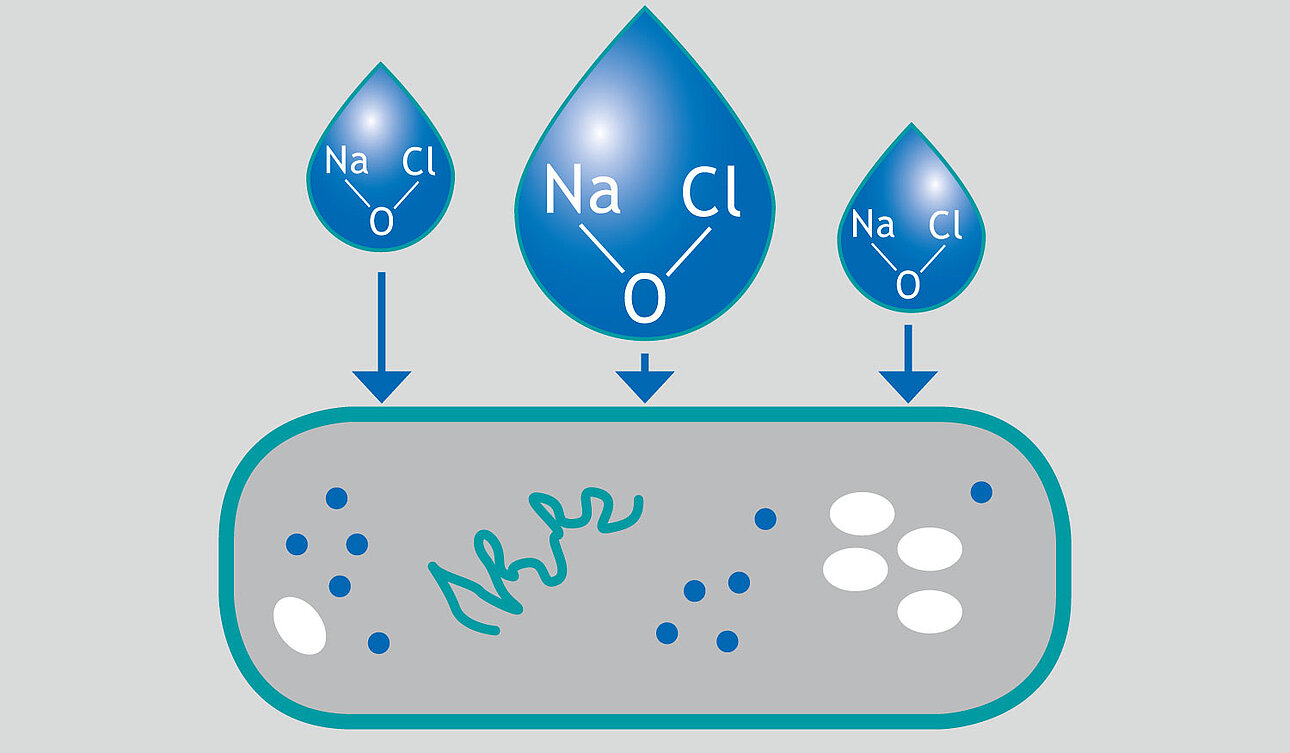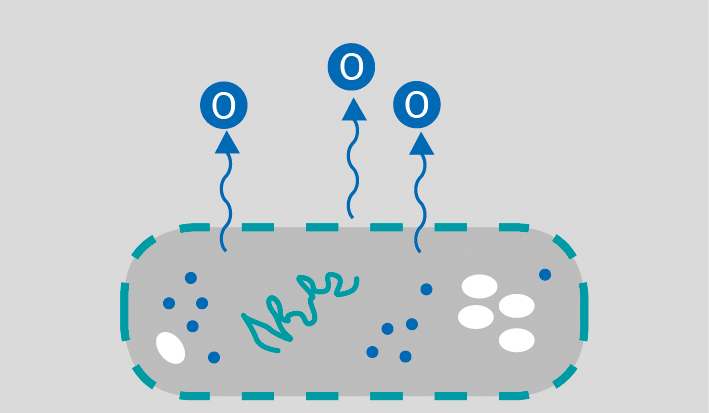Product description
LAVANOX-Serag® Wound Gel and LAVANOX-Serag® Wound Spray Gel are based on an electrochemically activated mineral salt solution containing <0.06% sodium hypochlorite/hypochlorous acid (NaOCl/HOCl) as preservative and lithium-magnesium-sodium silicate as gelling agent.
LAVANOX-Serag® Hydrogels keep the wound moist for a long period of time and their application causes no irritation or itching and only minimal pain.
Indications for use
LAVANOX-Serag® Wound Gel and Wound Spray Gel are used for the moistening, cleaning and mechanical decontamination of acute and chronic wounds. They support the autolytic debridement of the wound and help prevent infection. LAVANOX-Serag® Hydrogels are very suitable for moistening and, thanks to their effective cleaning properties, promote the physiological healing conditions.
The spray head of the LAVANOX-Serag® Wound Spray Gel makes it ideal for quickly covering extensive wounds. It can be applied easily and quickly and remains in the wound as a hydrogel.
Application
Before the first application and each time the dressing is changed, the wound should first be cleaned with LAVANOX-Serag® Wound Irrigation Solution or LAVANOX-Serag® Wound Spray. The LAVANOX-Serag® Wound Gels can be applied to the affected areas several times a day and used in combination with compresses, plasters and other bandages or dressings. There are no restrictions regarding the frequency and duration of use.
Shake the bottle of LAVANOX-Serag® Wound Spray Gel well before use, then spray the gel on with several puffs from a short distance. The solution solidifies immediately into a well-adhering hydrogel.
The LAVANOX-Serag® Wound Gel in the tube can be applied evenly to the wound and surrounding area using, for example, a sterile spatula. Thanks to the outstanding viscosity, LAVANOX-Serag® Wound Gel adheres well and keeps the wound and surrounding area moist for a long period of time.
Mechanism of action
The preservative sodium hypochlorite/hypochlorous acid (NaOCl/HOCl) is an effective oxidant that splits off and releases oxygen (O). This released oxygen impairs the permeability of the cell wall of pathogens such as bacteria (including Pseudomonas aeruginosa, MRSA/MRE), viruses and fungi and ensures an excellent mechanical debridement due to the reduced surface tension. Microorganisms can no longer withstand the osmotic pressure and the microbial load is reduced.1,3,4
Once the oxygen has been split off from the sodium hypochlorite/hypochlorous acid, the substance reacts back to its natural starting components, water and salt.4
Sodium hypochlorite/hypochlorous acid is also produced by the body itself as a defence against microorganisms in lysosomes and supports the body's own self-healing process.
The concentration of “active chlorine” is thereby sufficiently low to facilitate an excellent wound healing milieu without damaging human tissue.3
Effectiveness
The antimicrobial effectiveness of two wound irrigation solutions containing the preservative NaOCl/HOCl was examined in the laboratory for the two test microbes S. aureus and E. hirae The irrigation solution with 50/50 ppm achieved a significantly weaker antimicrobial efficacy (reduction of less than log-3) than the more highly concentrated solution with 800 ppm.7
Tolerability
Irrigation solutions containing the preservative NaOCl/HOCl (800 ppm) are very well tolerated. This excellent tolerability was demonstrated in cytotoxicity analyses and in the HET-CAM test (chicken embryo test). 1
The allergy test (patch test) shows that there is no sensitisation and that no toxic-irritative intolerances occur. 1 In the Consensus on Wound Antisepsis 2018 9, irrigation solutions with NaOCl/HOCl are classified as being the first choice for a wide range of applications and for the decontamination of acute and chronic wounds.
Cells in healthy tissues have endogenous protective mechanisms against the redox processes taking place with NaOCl/HOCl and are not damaged. 4
A prospective clinical comparative study carried out in 2019 demonstrated that irrigation solutions containing the preservative NaOCl/HOCl (800 ppm) are comparable with respect to pain perception and tolerability to the gold standard wound irrigation solution based on 0.04% polyhexanide. 8
Delivery programme
| Art.No. | PIP-code | Quantity | PU | |
|---|---|---|---|---|
| 017073 | 11869882 | Plastic bottle Spray Gel 75 ml | 1 | |
| 017075 | 16043833 | Tube 50g | 1 |
Literature
1 Brill FHH. Data on file. 2013
2 Kammerlander G, Assadian O, Eberlein T, Zweitmuller P, Luchsinger S, Andriessen A. A clinical evaluation of the efficacy and safety of singlet oxygen in cleansing and disinfecting stagnating wounds. J Wound Care. 2011 Apr;20(4):149-50
3 Kramer A. Wundantiseptik. ARS MEDICI. 2016 (9): 419-426
4 Lorberth J, Massa W. Zu den chemischen Grundlagen der Wirkung von Steralythen. Wund Management 2012 (3): 52-54
5 Möller A, Splieth B, Schmitz M, Eberlein T. Produkte auf Basis elektrochemischer Aktivierung (ECA) im erweiterten medizinischen Einsatz. Medizin & Praxis. 2016
6 Anna-Lena Severing, Julian-Dario Rembe, Verena Koester, Ewa K. Stuermer. Safety and efficacy profiles of different commercial sodium hypochlrite/hypochlorous acid solutions (NaClO/HClO): antimicrobial efficacy, cytotoxic impact and physiochemical parameter in vitro, Journal of Antimicrobial Chemotherapy 2018 Nov: 356-372
7 Brill FHH. Data on file. 2018
8 Eberlein T, Data on file. 2019

![[Translate to Englisch:] LAVANOX Wundsprühgel [Translate to Englisch:] LAVANOX Wundsprühgel](/fileadmin/_processed_/2/1/csm_LAVANOX-Serag_Wundspruehgel_03_b4800812a2.jpg)





